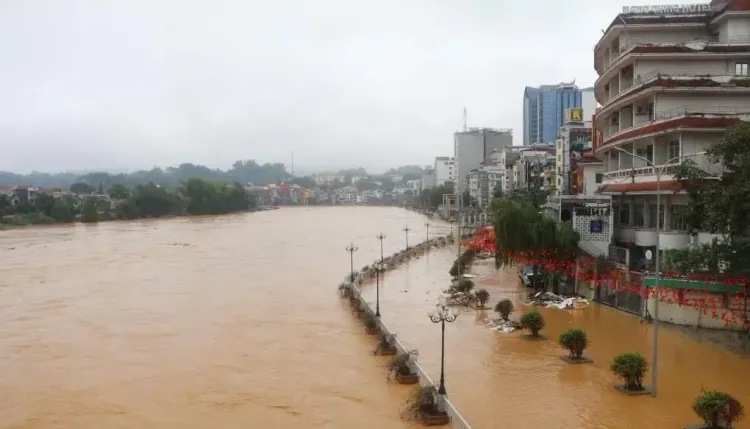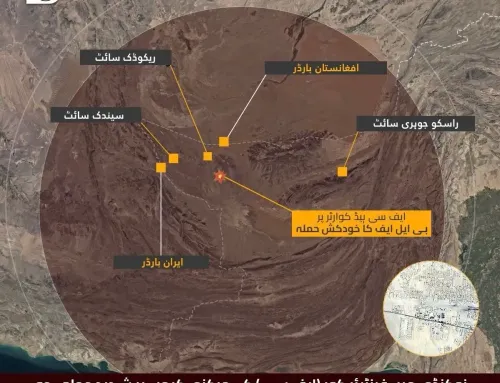What Are the Consequences of Typhoon Matmo in Vietnam?

Synopsis
Key Takeaways
- 15 fatalities and 8 injuries reported due to Typhoon Matmo.
- Over 225,000 homes affected.
- Nearly 587,000 livestock lost.
- Emergency services deployed for recovery.
- Power restoration efforts ongoing in affected areas.
Hanoi, Oct 10 (NationPress) Devastating heavy rainfall and flooding instigated by Typhoon Matmo have resulted in the tragic deaths of 15 individuals and left eight others injured throughout northern and north-central Vietnam, as reported by the Vietnam Disaster and Dyke Management Authority on Friday.
Over 225,000 homes have been submerged, with more than 1,500 properties suffering severe damage, and around 24,000 hectares of rice and other crops have been inundated. Additionally, nearly 587,000 livestock and poultry have been killed or swept away.
The storm has also caused significant interruptions to transportation, with 27 roads blocked due to flooding and landslides, the agency noted.
Around 181,000 households have experienced power outages, and telecommunications in several provinces remain partially disrupted, according to the agency.
On Thursday, Vietnamese Prime Minister Pham Minh Chinh urged ministries and agencies to actively assist local authorities in addressing the aftermath of Typhoon Matmo, as reported by Xinhua news agency.
Earlier, on Tuesday, Prime Minister Pham Minh Chinh also issued an urgent directive calling for intensified efforts to prevent flash floods and landslides while ensuring the safety of residents in affected areas.
On October 7, a segment of the Bac Khe 1 hydropower dam in northern Vietnam's Lang Son province collapsed due to prolonged rainfall and excessive water pressure following the heavy downpours from Typhoon Matmo, the 11th storm to strike Vietnam this year.
Emergency teams, including police and military personnel, have been deployed to stabilize the situation and mitigate further damage.
Not only did Typhoon Matmo affect Vietnam, but on October 6, it also made landfall and weakened after a second landfall in south China's Guangxi Zhuang Autonomous Region, where recovery efforts were simultaneously underway.
Typhoon Matmo had been downgraded to a severe tropical storm upon making landfall in Guangxi's coastal areas around Monday, bringing strong winds and heavy rainfall that particularly impacted the cities of Beihai, Qinzhou, and Fangchenggang.
As of Monday, the typhoon had affected 10,561 people in Beihai, prompting the relocation of 10,003 residents for their safety, along with approximately 3,400 hectares of crops damaged, according to the municipal emergency management bureau.
Strong winds have also uprooted over 4,000 trees in Beihai, obstructing roads. Municipal authorities mobilized workers to clear debris and restore transport.
Qinzhou and Fangchenggang reported similar incidents with fallen trees and billboards. Emergency response teams were dispatched to clear debris and address waterlogging issues.
According to regional meteorological authorities, Typhoon Matmo moved into northeastern Vietnam around noon on Monday, while forecasts indicated that strong winds and rain would persist in western and southern Guangxi.
Qinzhou and another city, Chongzuo, lifted temporary traffic controls, and railway services gradually resumed.
In Beihai, extensive power restoration efforts are ongoing in affected areas, with over 1,300 personnel, 116 emergency power vehicles, and 1,730 emergency generators involved.










